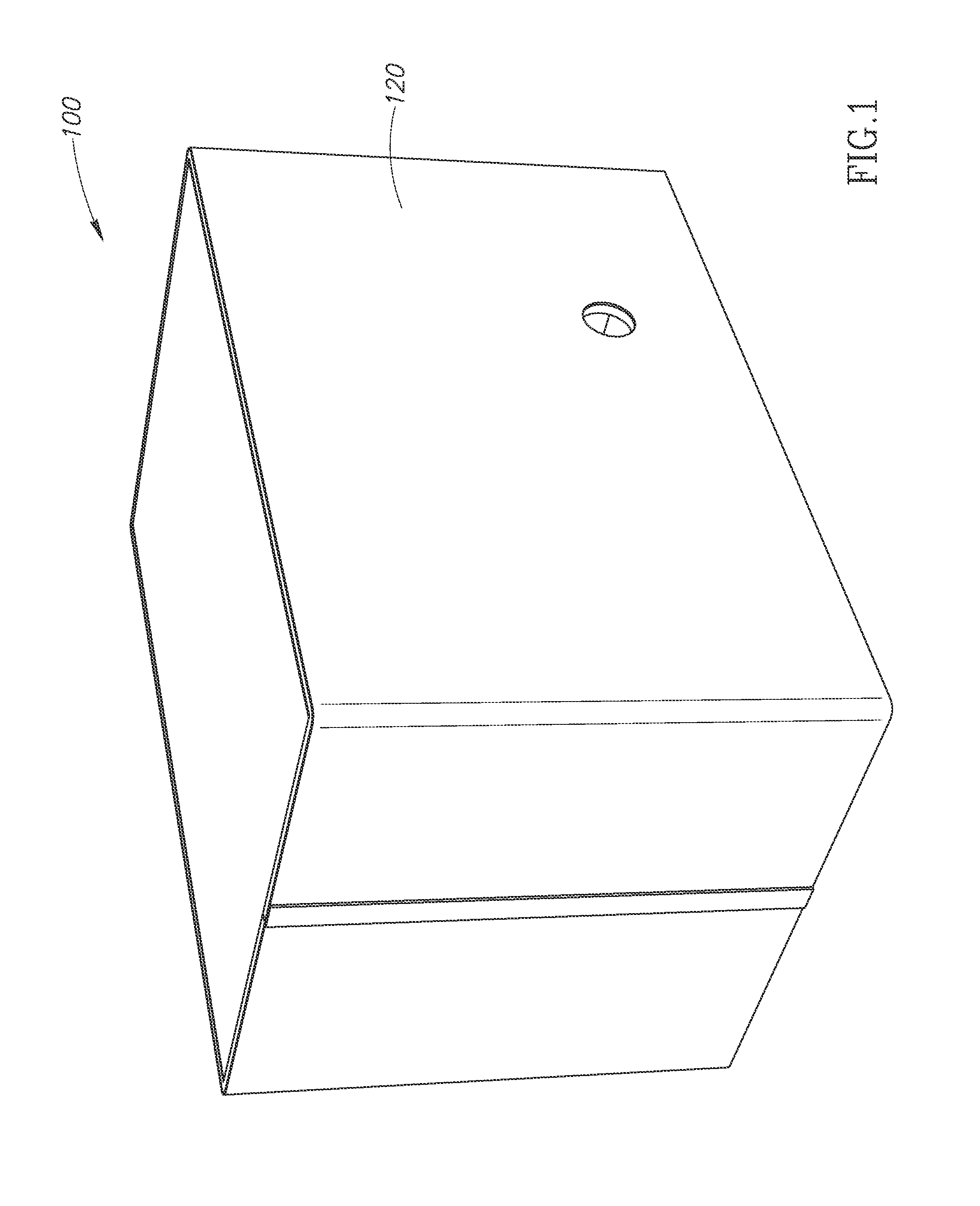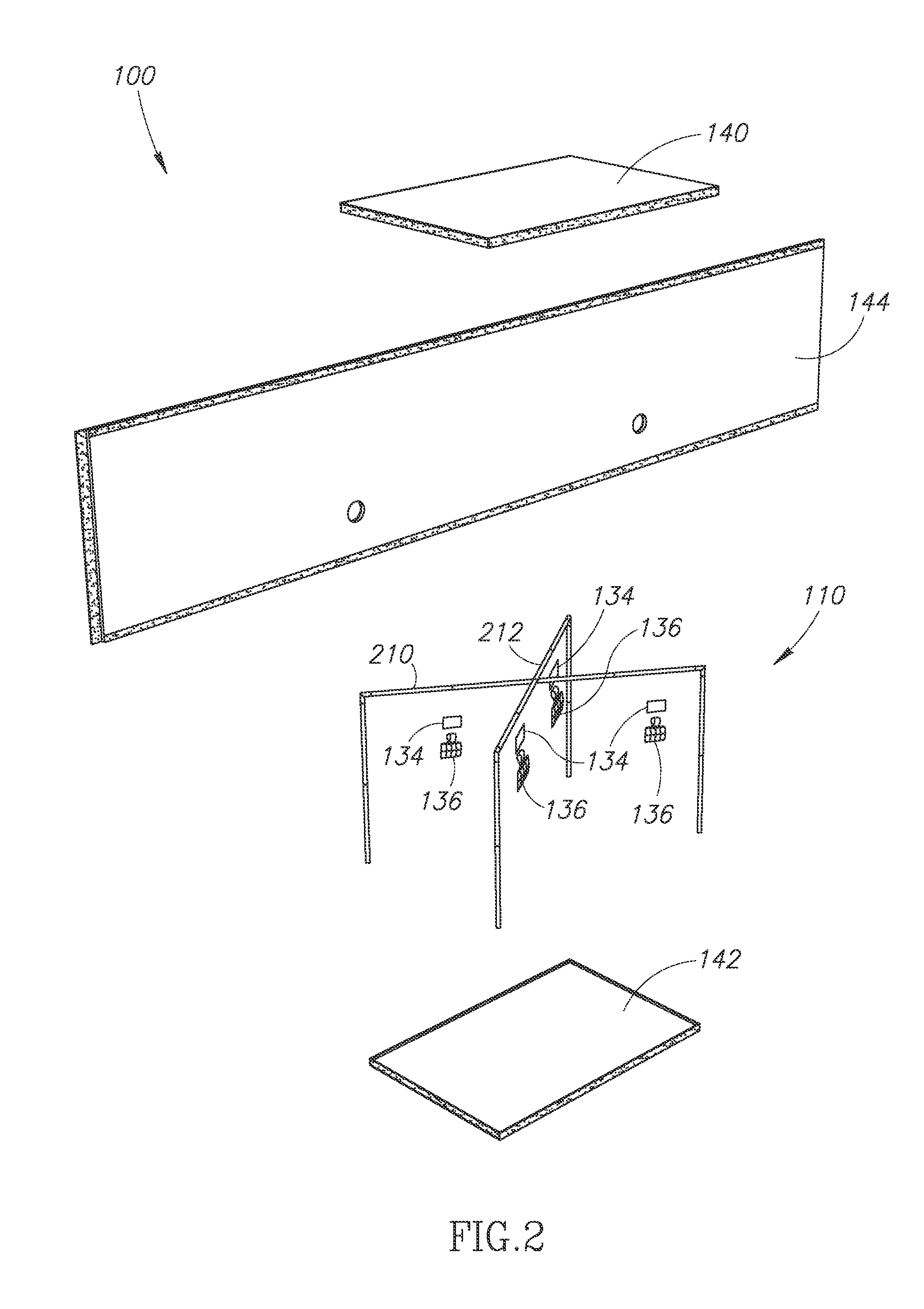Emergency shelter
a technology for emergency shelters and shelters, applied in protective buildings/shelters, building types, construction, etc., can solve problems such as power outages, residents may be unable to stay in their homes, and homes are intact but without electricity
- Summary
- Abstract
- Description
- Claims
- Application Information
AI Technical Summary
Benefits of technology
Problems solved by technology
Method used
Image
Examples
Embodiment Construction
[0023]FIG. 1 is perspective view an emergency shelter 100. The shelter 100 is designed for indoor or outdoor use. For example, the shelter 100 may be assembled inside a home (e.g., on top of a bed, on a floor, and the like). The shelter 100 is configured to retain heat (e.g., body heat, heat generated by a chemical heating pack, and the like) or cold (e.g., cold generated by an ice pack) without the aid of external power or fuel (such as electricity, gas, oil, and the like).
[0024]Referring to FIG. 15, one or more people (e.g., a person 102) may assemble the shelter 100 inside a home and sleep comfortably inside the shelter when environmental temperatures inside the home would make doing so difficult, if not impossible. By using the shelter 100 in this manner, residents (e.g., the person 102) may avoid vacating the home during a power outage. In other words, the shelter 100 helps people stay in their homes when heating and / or cooling are not operating in the home.
[0025]The shelter 10...
PUM
 Login to View More
Login to View More Abstract
Description
Claims
Application Information
 Login to View More
Login to View More - R&D
- Intellectual Property
- Life Sciences
- Materials
- Tech Scout
- Unparalleled Data Quality
- Higher Quality Content
- 60% Fewer Hallucinations
Browse by: Latest US Patents, China's latest patents, Technical Efficacy Thesaurus, Application Domain, Technology Topic, Popular Technical Reports.
© 2025 PatSnap. All rights reserved.Legal|Privacy policy|Modern Slavery Act Transparency Statement|Sitemap|About US| Contact US: help@patsnap.com



